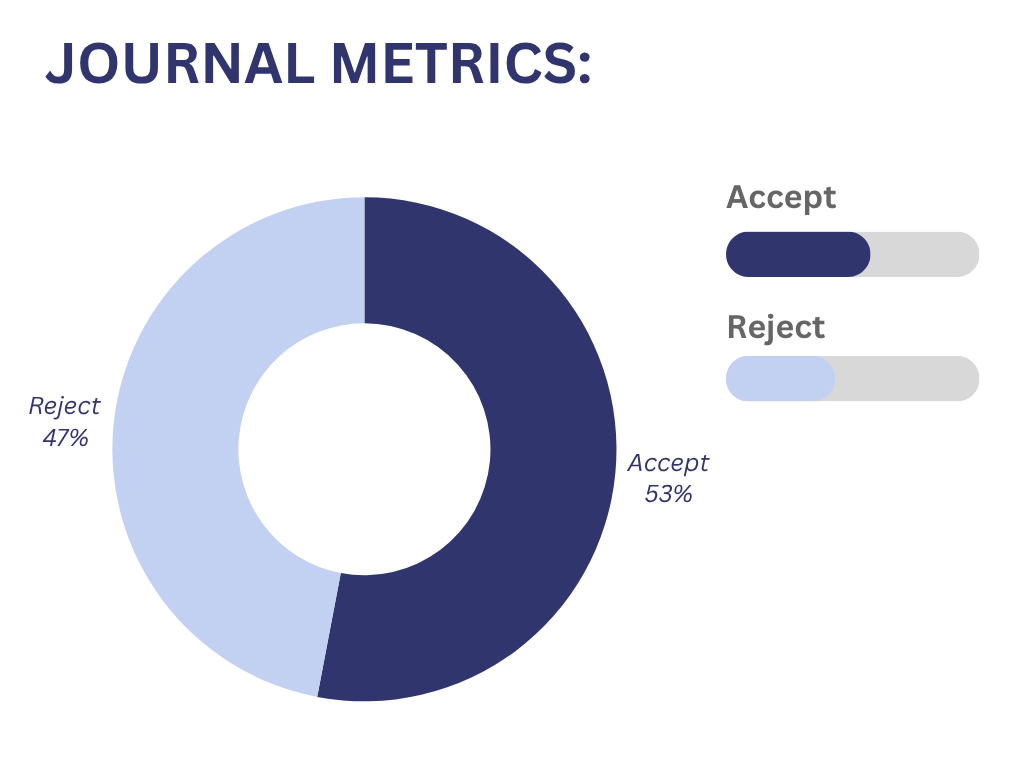Neutrosophic Data Envelopment Analysis: a Comprehensive Review and Current Trends
Abstract
The concept of a neutrosophic set is a comprehensive extension of both fuzzy sets and Intuitionistic Fuzzy Sets (IFSs). It allows decision makers to assign three distinct membership degrees, enabling a more precise representation of uncertainty. Neutrosophic Data Envelopment Analysis (Neu-DEA) is an extended version of the Data Envelopment Analysis (DEA) and Fuzzy DEA (FDEA) concepts. It aims to assess the performance of Decision Making Units (DMUs) within a neutrosophic environment. Neu-DEA specifically tackles the challenges associated with evaluating performance when the input and output data are incomplete, ambiguous, or unsure. As a result, the Neu-DEAs have attracted substantial attention from scholars and academics. This article aims to provide an academic overview of the present state, development patterns, and future research directions of the Neu-DEA research. To do this, the study examines relevant publications using two analytical approaches: description analysis and literature review.
Keywords:
Neutrosophic data envelopment anal, data envelopment analysis, Performance analysis, Efficiency analysis, Neutrosophic numberReferences
- [1] Charnes, A., Cooper, W. W., & Rhodes, E. (1978). Measuring the efficiency of decision making units. European journal of operational research, 2(6), 429–444.
- [2] https://www.sciencedirect.com/science/article/pii/0377221778901388 [2] Banker, R. D., Charnes, A., & Cooper, W. W. (1984). Some models for estimating technical and scale inefficiencies in data envelopment analysis. Management science, 30(9), 1078–1092.
- [3] https://doi.org/10.1287/mnsc.30.9.1078
- [4] Cooper, W. W., Park, K. S., & Pastor, J. T. (1999). RAM: a range adjusted measure of inefficiency for use with additive models, and relations to other models and measures in DEA. Journal of productivity analysis, 11, 5–42. https://doi.org/10.1023/A:1007701304281
- [5] Seiford, L. M., & Thrall, R. M. (1990). Recent developments in DEA: the mathematical programming approach to frontier analysis. Journal of econometrics, 46(1-2), 7-38. https://www.sciencedirect.com/science/article/pii/030440769090045U
- [6] Tone, K. (2001). A slacks-based measure of efficiency in data envelopment analysis. European journal of operational research, 130(3), 498–509. https://www.sciencedirect.com/science/article/pii/S0377221799004075
- [7] Andersen, P., & Petersen, N. C. (1993). A procedure for ranking efficient units in data envelopment analysis. Management science, 39(10), 1261–1264. https://doi.org/10.1287/mnsc.39.10.1261
- [8] Sexton, T. R., Silkman, R. H., & Hogan, A. J. (1986). Data envelopment analysis: critique and extensions. New directions for program evaluation, 1986(32), 73–105. https://doi.org/10.1002/ev.1441
- [9] Seiford, L. M., & Zhu, J. (2002). Modeling undesirable factors in efficiency evaluation. European journal of operational research, 142(1), 16–20. https://www.sciencedirect.com/science/article/pii/S0377221701002934
- [10] Liu, J. S., Lu, L. Y., Lu, W. M., & Lin, B. J. (2013). A survey of DEA applications. Omega, 41(5), 893–902. https://www.sciencedirect.com/science/article/pii/S0305048312002186
- [11] Mardani, A., Zavadskas, E. K., Streimikiene, D., Jusoh, A., & Khoshnoudi, M. (2017). A comprehensive review
- [12] of data envelopment analysis (DEA) approach in energy efficiency. Renewable and sustainable energy reviews, 70, 1298–1322. https:/www.sciencedirect.com/science/article/pii/S1364032116310875
- [13] Mohanta, K. K., Sharanappa, D. S., & Aggarwal, A. (2021). Efficiency analysis in the management of COVID-19 pandemic in India based on data envelopment analysis. Current research in behavioral sciences, 2, 100063. https://www.sciencedirect.com/science/article/pii/S2666518221000504
- [14] Chaubey, V., Sharanappa, D. S., Mohanta, K. K., Mishra, V. N., & Mishra, L. N. (2022). Efficiency and
- [15] productivity analysis of the indian agriculture sector based on the malmquist-DEA. Universal journal of agricultural research, 10(4), 331–343. https://www.researchgate.net/profile/Kshitish-Mohanta/publication/362412506_Efficiency_and_Productivity_Analysis_of_the_Indian_Agriculture_Sector_B
- [16] ased_on_the_Malmquist-DEA_Technique/links/62e8e7de9d410c5ff37d5449/Efficiency-and-Productivity-
- [17] Analysis-of-t
- [18] Kohl, S., Schoenfelder, J., Fügener, A., & Brunner, J. O. (2019). The use of data envelopment analysis (DEA) in
- [19] healthcare with a focus on hospitals. Health care management science, 22(2), 245–286. DOI:10.1007/s10729-018-9436-8
- [20] Zhu, J. (2003). Imprecise data envelopment analysis (IDEA): a review and improvement with an application. European journal of operational research, 144(3), 513–529. https://www.sciencedirect.com/science/article/pii/S0377221701003927
- [21] Emrouznejad, A., & Tavana, M. (2013). Performance measurement with fuzzy data envelopment analysis (Vol. 309). Springer.
- [22] Zadeh, L. A. (1965). Fuzzy sets. Information and control, 8(3), 338–353. https://www.sciencedirect.com/science/article/pii/S001999586590241X
- [23] Emrouznejad, A., Tavana, M., & Hatami-Marbini, A. (2014). The state of the art in fuzzy data envelopment
- [24] analysis. Performance measurement with fuzzy data envelopment analysis, 1-45. Springer, Berlin, Heidelberg. https://doi.org/10.1007/978-3-642-41372-8_1
- [25] Zhou, W., & Xu, Z. (2020). An overview of the fuzzy data envelopment analysis research and its successful applications. International journal of fuzzy systems, 22(4), 1037–1055. https://doi.org/10.1007/s40815-020-00853-6
- [26] Atanassov, K. T. (1986). Intuitionistic fuzzy sets. Fuzzy sets and systems, 20(1), 87–96. https://www.sciencedirect.com/science/article/pii/S0165011486800343
- [27] Puri, J., & Yadav, S. P. (2015). Intuitionistic fuzzy data envelopment analysis: an application to the banking sector in India. Expert systems with applications, 42(11), 4982–4998. https://www.sciencedirect.com/science/article/pii/S095741741500113X
- [28] Arya, A., & Yadav, S. P. (2019). Development of intuitionistic fuzzy data envelopment analysis models and
- [29] intuitionistic fuzzy input–output targets. Soft computing, 23(18), 8975–8993. https://doi.org/10.1007/s00500-018-3504-3
- [30] Shakouri, B., Abbasi Shureshjani, R., Daneshian, B., & Hosseinzadeh Lotfi, F. (2020). A parametric method for
- [31] ranking intuitionistic fuzzy numbers and its application to solve intuitionistic fuzzy network data envelopment analysis models. Complexity, 2020, 1-25. https://doi.org/10.1155/2020/6408613
- [32] Mohanta, K. K., & Sharanappa, D. S. (2023). A novel technique for solving intuitionistic fuzzy DEA model: an application in indian agriculture sector. https://doi.org/10.21203/rs.3.rs-2462648/v2
- [33] Edalatpanah, S. A. (2019). A data envelopment analysis model with triangular intuitionistic fuzzy numbers. International journal of data envelopment analysis, 7(4), 47–58. https://ijdea.srbiau.ac.ir/article_15366.html
- [34] Akram, M., Shah, S. M. U., Al-Shamiri, M. M. A., & Edalatpanah, S. A. (2023). Extended DEA method for
- [35] solving multi-objective transportation problem with Fermatean fuzzy sets. Aims math, 8, 924–961. https://www.aimspress.com/aimspress-data/math/2023/1/PDF/math-08-01-045.pdf
- [36] Mohanta, K. K., Sharanappa, D. S., Dabke, D., Mishra, L. N., & Mishra, V. N. (2022). Data envelopment analysis
- [37] on the context of spherical fuzzy inputs and outputs. European journal of pure and applied mathematics, 15(3), 1158–1179. https://www.ejpam.com/index.php/ejpam/article/view/4391
- [38] Mohanta, K. K., & Sharanappa, D. S. (2022). The spherical fuzzy data envelopment analysis (SF-DEA): a novel
- [39] approach for efficiency analysis. AIJR abstracts, 52. https://books.aijr.org/index.php/press/catalog/book/138/chapter/2085
- [40] Smarandache, F. (1999). A unifying field in Logics: Neutrosophic Logic. In Philosophy (pp. 1-141). American Research Press. https://core.ac.uk/download/pdf/84931.pdf
- [41] Edalatpanah, S. A. (2018). Neutrosophic perspective on DEA. Journal of applied research on industrial engineering, 5(4), 339–345. https://doi.org/10.22105/jarie.2019.196020.1100
- [42] Abdelfattah, W. (2019). Data envelopment analysis with neutrosophic inputs and outputs. Expert systems, 36(6), e12453. https://doi.org/10.1111/exsy.12453
- [43] Kahraman, C., Otay, İ., Öztayşi, B., & Onar, S. Ç. (2019). An integrated AHP & DEA methodology with
- [44] neutrosophic sets. Fuzzy multi-criteria decision-making using neutrosophic sets, 623-645. https://doi.org/10.1007/978-3-030-00045-5_24
- [45] Edalatpanah, S. A., & Smarandache, F. (2019). Data envelopment analysis for simplified neutrosophic sets.
- [46] Neutrosophic sets and systems, 29. https://digitalrepository.unm.edu/nss_journal/vol29/iss1/17/
- [47] Mao, X., Guoxi, Z., Fallah, M., & Edalatpanah, S. A. (2020). A neutrosophic-based approach in data envelopment analysis with undesirable outputs. Mathematical problems in engineering, 2020, 1-8. https://www.hindawi.com/journals/mpe/2020/7626102/
- [48] Edalatpanah, S. A. (2020). Data envelopment analysis based on triangular neutrosophic numbers. CAAI transactions on intelligence technology, 5(2), 94–98. https://doi.org/10.1049/trit.2020.0016
- [49] Yang, W., Cai, L., Edalatpanah, S. A., & Smarandache, F. (2020). Triangular single valued neutrosophic data
- [50] envelopment analysis: application to hospital performance measurement. Symmetry, 12(4), 588. https://www.mdpi.com/2073-8994/12/4/588
- [51] Chakraborty, A., Mondal, S. P., Ahmadian, A., Senu, N., Alam, S., & Salahshour, S. (2018). Different forms of triangular neutrosophic numbers, de-neutrosophication techniques, and their applications. Symmetry, 10(8), 327. https://www.mdpi.com/2073-8994/10/8/327
- [52] Nabeeh, N. (2020). A hybrid neutrosophic approach of DEMATEL with AR-DEA in technology
- [53] selection. Neutrosophic sets and systems, 31, 17-30. https://digitalrepository.unm.edu/nss_journal/vol31/iss1/2/
- [54] Öztaş, G. Z., Adalı, E. A., Tuş, A., Öztaş, T., & Özçil, A. (2020). An alternative approach for performance
- [55] evaluation: plithogenic sets and DEA. International conference on intelligent and fuzzy systems (pp. 742-749). Cham: Springer International Publishing. https://doi.org/10.1007/978-3-030-51156-2_86
- [56] Tapia, J. F. D. (2021). Evaluating negative emissions technologies using neutrosophic data envelopment
- [57] analysis. Journal of ceaner production, 286, 125494. https://www.sciencedirect.com/science/article/pii/S0959652620355402
- [58] Abdelfattah, W. (2021). Neutrosophic data envelopment analysis: an application to regional hospitals in
- [59] Tunisia. Neutrosophic sets and systems, 41, 89-105. https://fs.unm.edu/NSS/NeutrosophicDataEnvelopmentAnalysis6.pdf
- [60] Monazzam, N., Alinezhad, A., & Malek, H. (2021). Online simulation optimization using neutrosophic cross-
- [61] efficiency DEA and box–behnken experimental design (a case study on the automotive paint shop). International journal of information technology & decision making, 20(6), 1657–1684. https://doi.org/10.1142/S0219622021500462
- [62] Jaberi Hafshjani, M., Najafi, S. E., Hosseinzadeh Lotfi, F., & Hajimolana, S. M. (2021). A hybrid BSC-DEA model
- [63] with indeterminate information. Journal of mathematics, 2021, 1-14. DOI:10.1155/2021/8867135 https://www.hindawi.com/journals/jmath2021/8867135/
- [64] Tapia, J. F. D., Ortenero, J. R., & Tan, R. R. (2022). Selection of energy storage technologies under neutrosophic decision environment. Cleaner engineering and technology, 11, 100576. https://www.sciencedirect.com/science/article/pii/S2666790822001811
- [65] Mohanta, K. K., & Toragay, O. (2023). Enhanced performance evaluation through neutrosophic data
- [66] envelopment analysis leveraging pentagonal neutrosophic numbers. Journal of operational and strategic analytics, 1(2), 70–80. https://www.researchgate.net/profile/Kshitish-Mohanta/publication/371982852_Enhanced_Performance_Evaluation_Through_Neutrosophic_Data_Envelop
- [67] ment_Analysis_Leveraging_Pentagonal_Neutrosophic_Numbers/links/64a4d4f3c41fb852dd4de796/Enhanced-Performance-Evalu
- [68] Mohanta, K. K., & Sharanappa, D. S. (2023). A novel method for solving neutrosophic data envelopment
- [69] analysis models based on single-valued trapezoidal neutrosophic numbers. Soft computing, 27(22), 17103–17119. https://doi.org/10.1007 s00500-023-08872-9
- [70] Mohanta, K. K., Sharanappa, D. S., & Aggarwal, A. (2023). A novel modified Khatter’s approach for solving
- [71] neutrosophic data envelopment analysis. Croatian operational research review, 14(1), 15–28. https://hrcak.srce.hr/ojs/index.php/crorr/article/view/22530
- [72] Mohanta, K. K., Sharanappa, D. S., & Mishra, V. N. (2023). Neutrosophic data envelopment analysis based on
- [73] the possibilistic mean approach. Operations research and decisions, 33(2), 81–98. https://cejsh.icm.edu.pl/cejsh/element/bwmeta1.element.desklight-b30c97c3-5022-46b0-b971-ffac67d06aeb
- [74] Mohanta, K. K., Sharanappa, D. S., & Aggarwal, A. (2023). Value and ambiguity Index-based ranking approach
- [75] for solving neutrosophic data envelopment analysis. Neutrosophic sets and systems, 57(1), 25. https://digitalrepository.unm.edu/cgi/viewcontent.cgi article=2370&context=nss_journal
- [76] Mohanta, K. K., & Sharanappa, D. S. (2023). Development of the neutrosophic two-stage network data
- [77] envelopment analysis to measure the performance of the insurance industry. Soft computing. https://doi.org/10.1007/s00500-023-09294-3
- [78] Li, J., Alburaikan, A., & de Fátima Muniz, R. (2023). Evaluation of safety-based performance in construction
- [79] projects with neutrosophic data envelopment analysis. Management decision, 61(2), 552–568. https://doi.org/10.1108/MD-02-2022-0237
- [80] Rasinojehdehi, R., & Valami, H. B. (2023). A comprehensive neutrosophic model for evaluating the efficiency of airlines based on SBM model of network DEA. Decision making: applications in management and engineering, 6(2), 880–906. https://dmame-journal.org/index.php/dmame/article/view/729



